Which Running Gear Is Best: Hydration Vests vs Belts
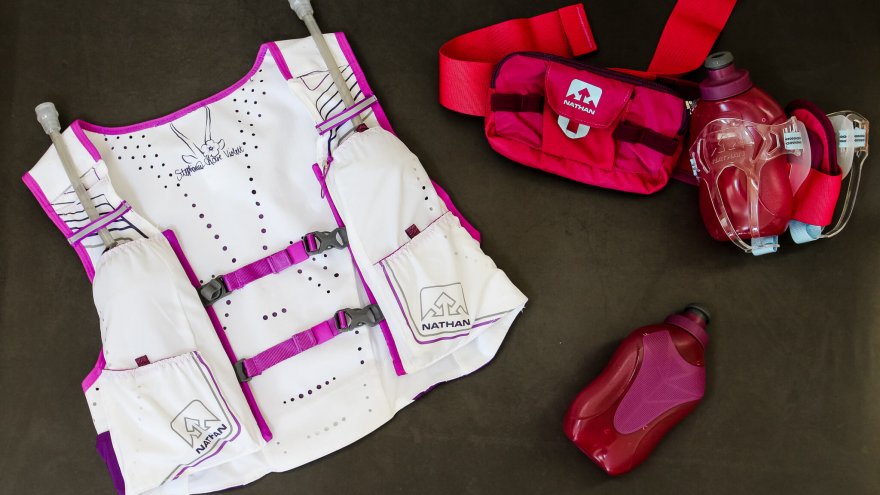
One of the most important pieces of running gear is a product for hydration. But with so many items on the market, it can be hard for beginners to decide on which gear is best, hydration vests vs belts?
Part of this comes down to the runner’s preference. But many other factors come into play.
And since many options are sold for affordable options, the runner might not want to just throw away between $20 and $50 on a product they may or may not like and use.
This is why it’s time to do some homework and learn the pros and cons to vests vs belts when comparing the best hydration gear.
Everything To Know About Hydration Vest
A hydration vest or pack is exactly what it sounds like. It’s a piece of gear that is worn like a vest but is equipped with means for hydration.
Essentially, it lets runners carry water (and other gear) with them without seeing to physically hold it in their hands.
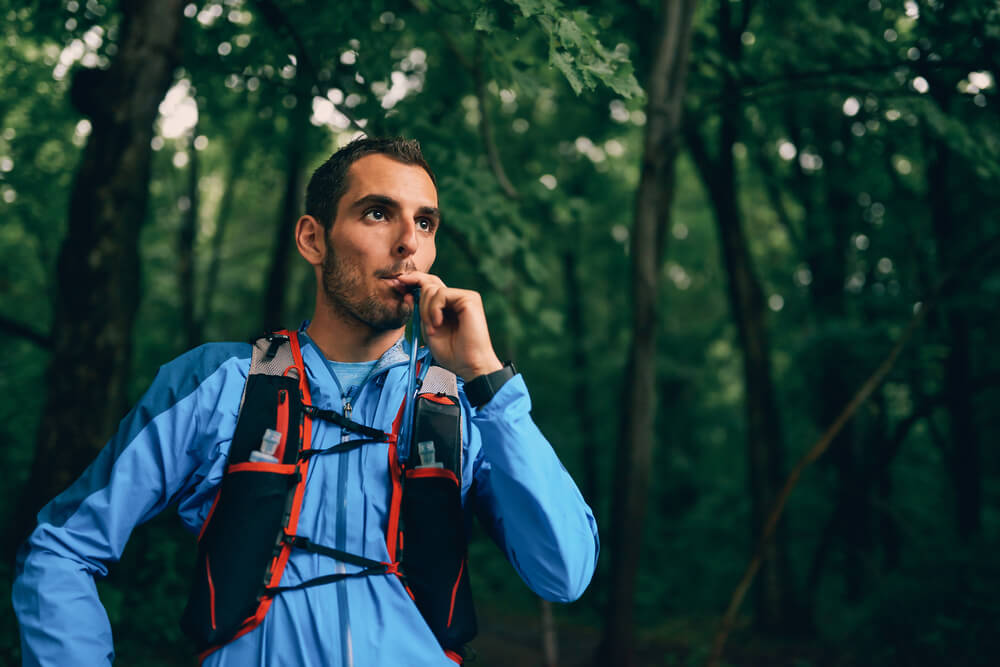
Bottles vs. Bladders
Hydration vests come in two different kinds: those that have bottles or those with a bladder/reservoir.
Those with bottles have them stored on the front strap pockets. This is ideal for runners who like the option to easily refill.
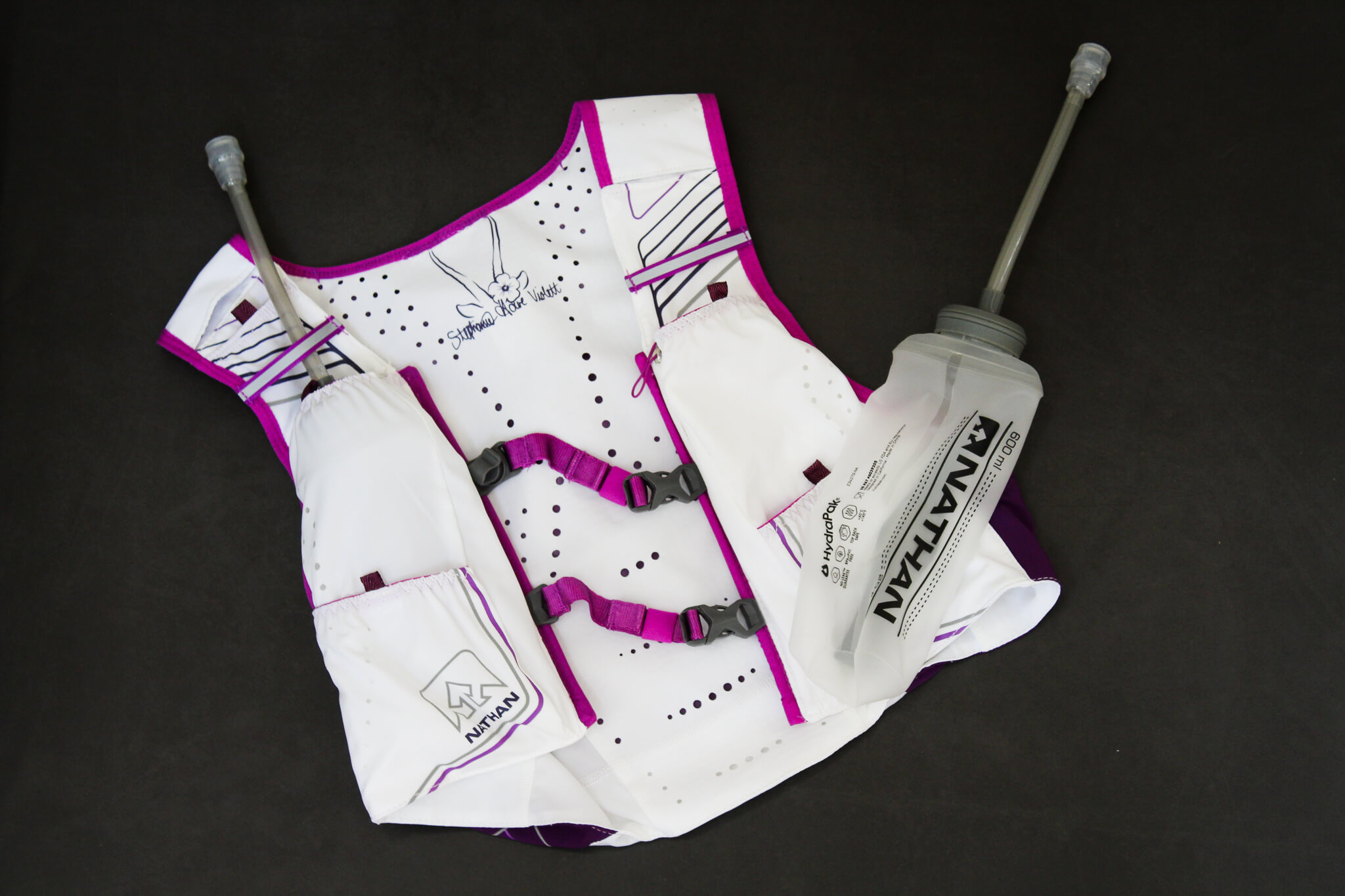
The vest either comes with the bottles or is compatible with typical water bottles.
This is also the better option for those who don’t like feeling weighed down on their backs. The downside is that some don’t like the feel of bulky bottles on their front, especially if the bottles are hard.
Hydration vests with bladders either come with it or its sold separately.
Bladders or reservoirs can store lots more water. This is ideal for marathoners, ultra runners, and hikers.
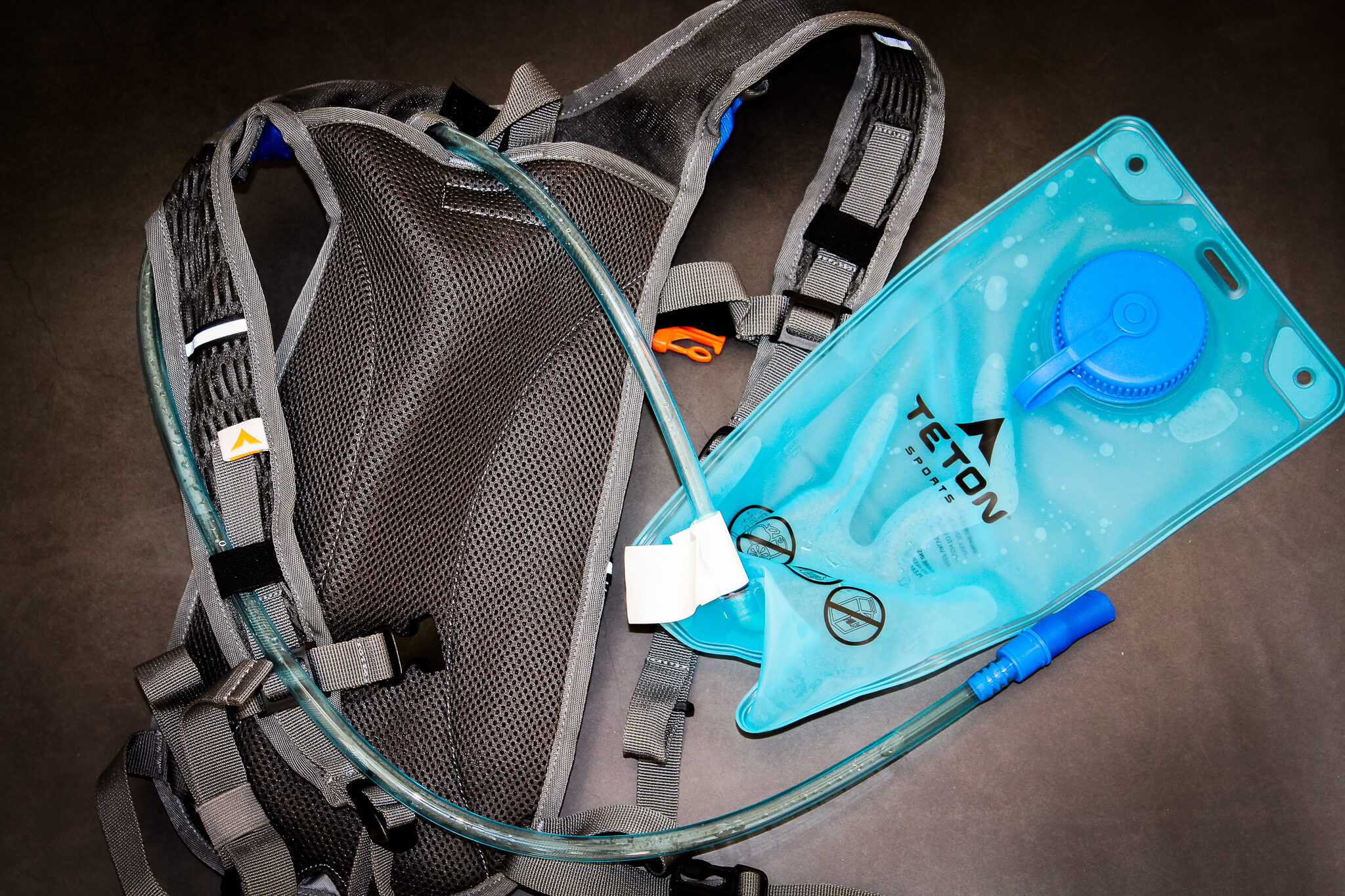
Filling up and cleaning is a bit more awkward compared to bottles.
The good news is that vests often come with the option for both methods of hydration.
Size And Fit
Other things to keep into consideration is the importance of getting the right size.
Options with reservoirs come in different sizes. One that can hold about two liters of water, which could be ideal for shorter runs. Runs six hours and more should have a reservoir that holds four to twelve liters.
Besides fluids, the vest should have storage space for items like energy gels or chews, keys, and other items. Those who are ultra runners or hikers might prefer options with lots of pockets.
The sizing also refers to getting the right fit. Companies provide sizing guides to make sure runners know exactly what size to get. Too big or tight options causes discomfort and even chafing.
The runner should get a snug fit, but with room to adjust.
There are hydration vests made specifically for women, so females should look into these for better cuts and overall fit.
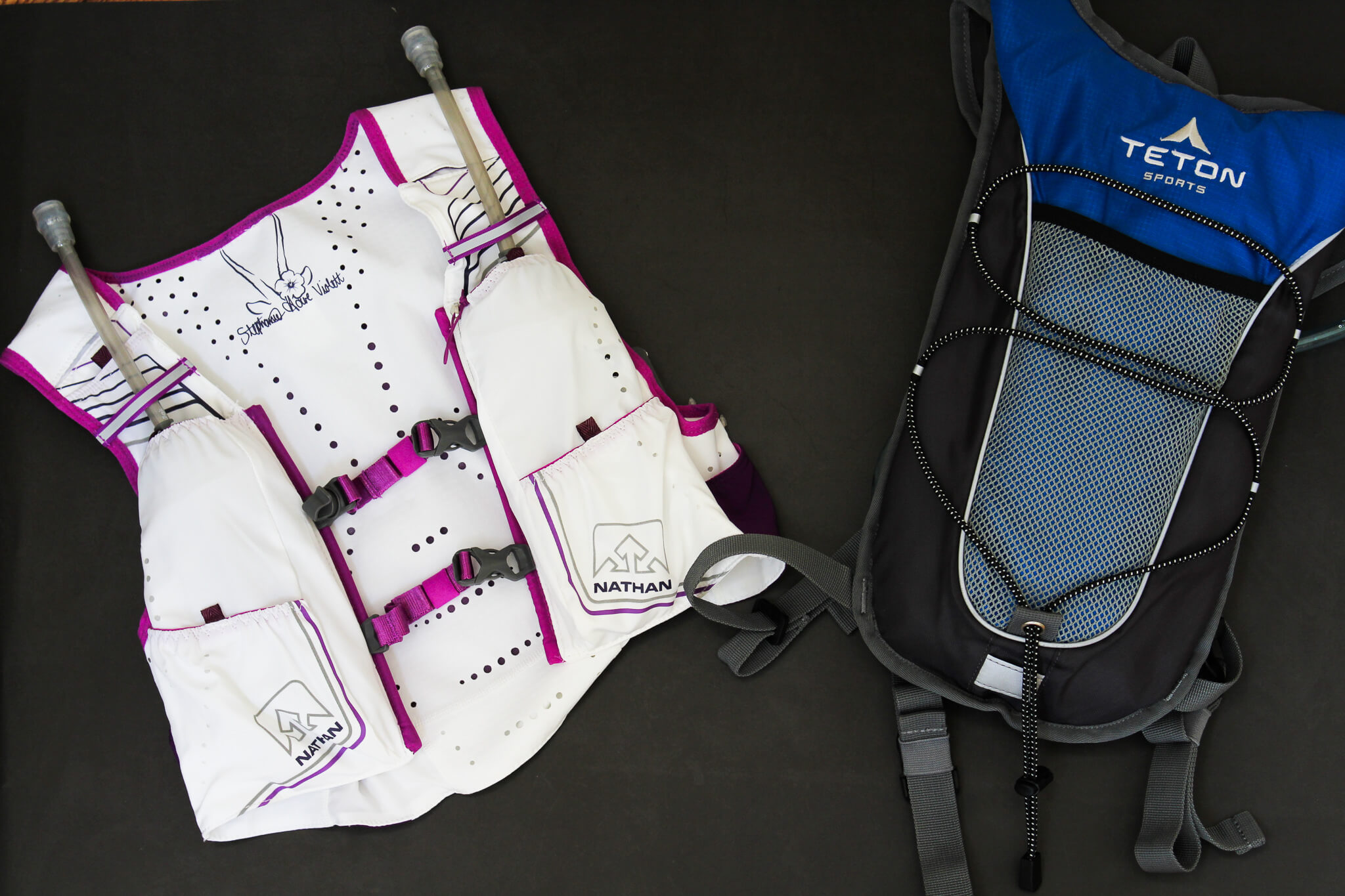
How To Drink From The Vest
The water is stored in the bladder, which features a water hose with a mouthpiece called a valve that is stored on the front straps of the vest. This is in one or dual holes designated for the mouthpiece.
The valve either is a bite to drink one or a push-pull one.
Bite valves require the runner to put pressure on it in order for water to flow from the bladder through the tube.
Push-pull valves mimic water bottles since it opens and closes.
Everything To Know About Hydration Belts
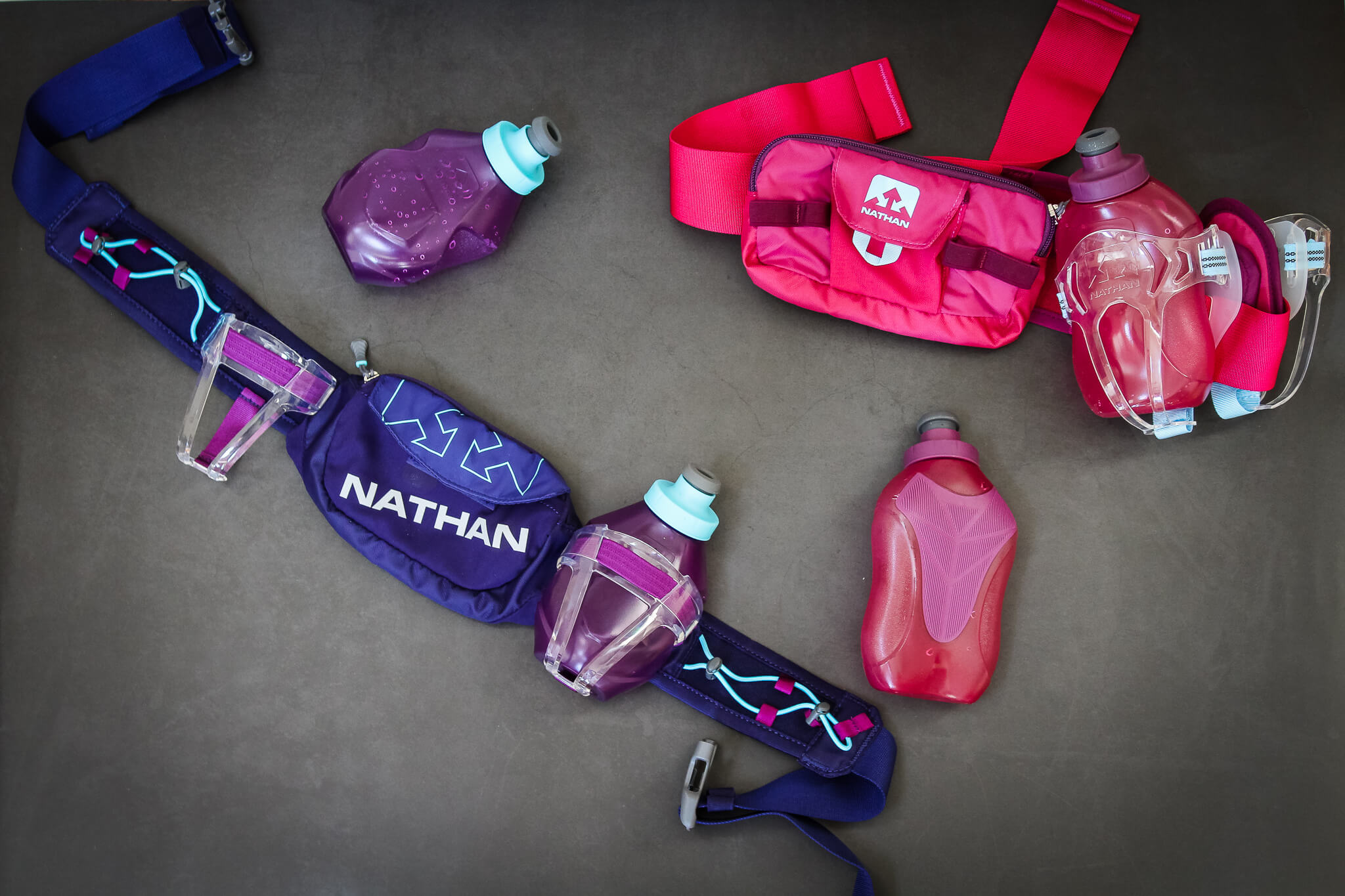
Hydration belts also allow the runner to carry fluids and other gear with them during their workout.
The difference here is that the water is worn around the waist via the belt.
There are pros and cons to this. For one, it’s easy to drink, refill and clean bottles. On the downside, it is limited to the amount of water than can be taken before needing to be refilled.
Hydration belts are great for mid- to long-distance runs. These generally hold anywhere from 8 to 24 oz. of water depending on the belt.
Not All Created Equal
There are some belts that don’t feature any space for bottles. Others do but don’t come with the bottles. Some have one bottle, others two.
The design of these waist packs also vary. There are kinds that feature one water bottle on each side and a pocket for storage in the middle.
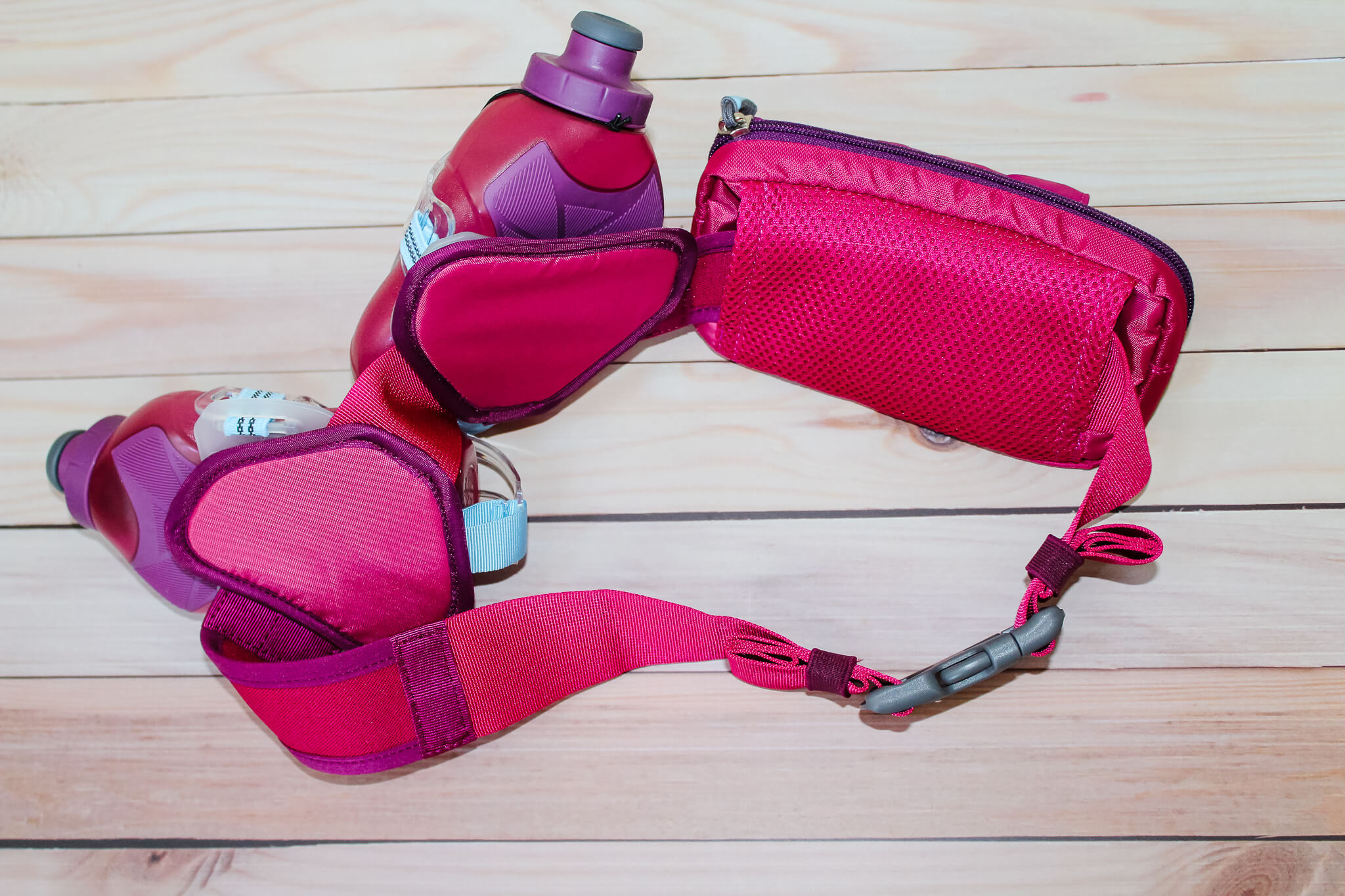
There are others that have the bottles worn on the back. Then there are those that have a pocket and bottle located just off-center.
Some are one piece of fabric to be put on over the head or stepped into. Then there are belts that have a clasp.
Sizing And Fit
Running belts either come in specific sizes or a “one size fits most” option.
Companies post their sizing guide. There is a risk that it won’t fit right if it is not the right size. Too big belts mean bouncing during the run. Too small means causing irritation and chafing.
Some of these do not have the option to adjust the size.
Other options like the “one size fit most” is adjustable by tightening or loosening the straps.
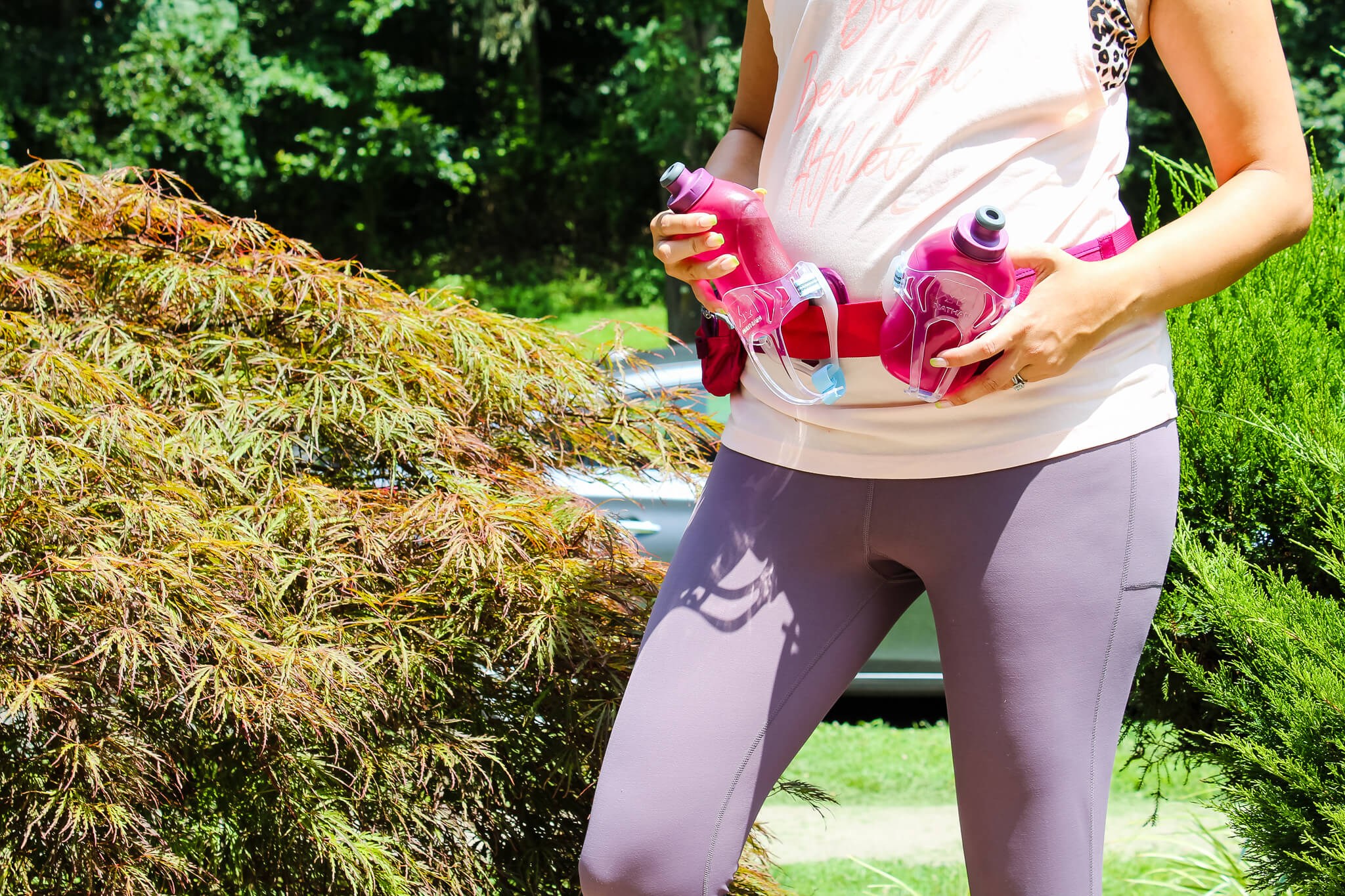
Pros And Cons
Hydration and fuel belts are best for those who do not want to wear anything on their backs. This piece of gear is a great alternative to handheld water bottles, allowing the runner to use their hands and have a place for gels and the like.
The major con is the runner is limited with space for gear and water.
So Which Is Better: Hydration Vests vs Belts
Let’s break down the main features and needs of the runner to determine which is the best one for that specific runner.
For Distance: Hydration Vest
Long-distance runners who are training for a marathon and longer, a vest is better for holding more water.
For Gear Junkies: Hydration Vest
Those who need more room for gear like ultrarunners, a vest has more storage space.
For Short Distance Runners: Hydration Belts
This option is all shorter distance runners really need. It makes it even ideal for half marathon distances.
For Those Who Run Light: Hydration Belt
Those who don’t like to carry a large load might like just having one bottle and gel on hand. This makes the belt the better option.
For Those Who Hate Cleaning: Hydration Belt
Belts are easier to clean since their bottles. Taking the bladder out and getting a good clean is more of a process for lazy athletes.
For Those Who Care About Comfort: Both
Both the vest and belt have the comfort factor based on specific brand’s models. This really comes down to preference. Just remember to get the right size.
Final Thoughts
More serious runners might want to invest in one of both kinds of hydration gear. This gives them more options for when a run calls for different needs.
Those who run various difference might not need a vest all the time. Then again, they might prefer one.
Getting a high-quality hydration product for runs is one of the best things runners can do. And either way, they choose, both a vest and a belt won’t disappoint.
Sources
- , How to Choose a Running Hydration Vests,, Outdoors Website
- , How Do Hydration Backpacks Work, Hiking Blog
Latest Articles
 Is Running on a Treadmill Easier Than Running Outside?Runners have their own preferences, whether it is treadmill running, running outside on the road, or exploring trails. So...
Is Running on a Treadmill Easier Than Running Outside?Runners have their own preferences, whether it is treadmill running, running outside on the road, or exploring trails. So... Is It OK to Use Trail Running Shoes on the Road?While trail running shoes can be used on roads, especially in situations where a runner encounters mixed terrains or pref...
Is It OK to Use Trail Running Shoes on the Road?While trail running shoes can be used on roads, especially in situations where a runner encounters mixed terrains or pref... How to Fix Sore Quads After Running?Rest, ice, gentle stretching, and over-the-counter pain relievers can help soothe sore quads after running. Also, ensure ...
How to Fix Sore Quads After Running?Rest, ice, gentle stretching, and over-the-counter pain relievers can help soothe sore quads after running. Also, ensure ... 10 Fruits With The Most Electrolytes to Replace Sports DrinksThese fruits are high in electrolytes such as potassium, magnesium, and calcium, essential for hydration, muscle function...
10 Fruits With The Most Electrolytes to Replace Sports DrinksThese fruits are high in electrolytes such as potassium, magnesium, and calcium, essential for hydration, muscle function...

